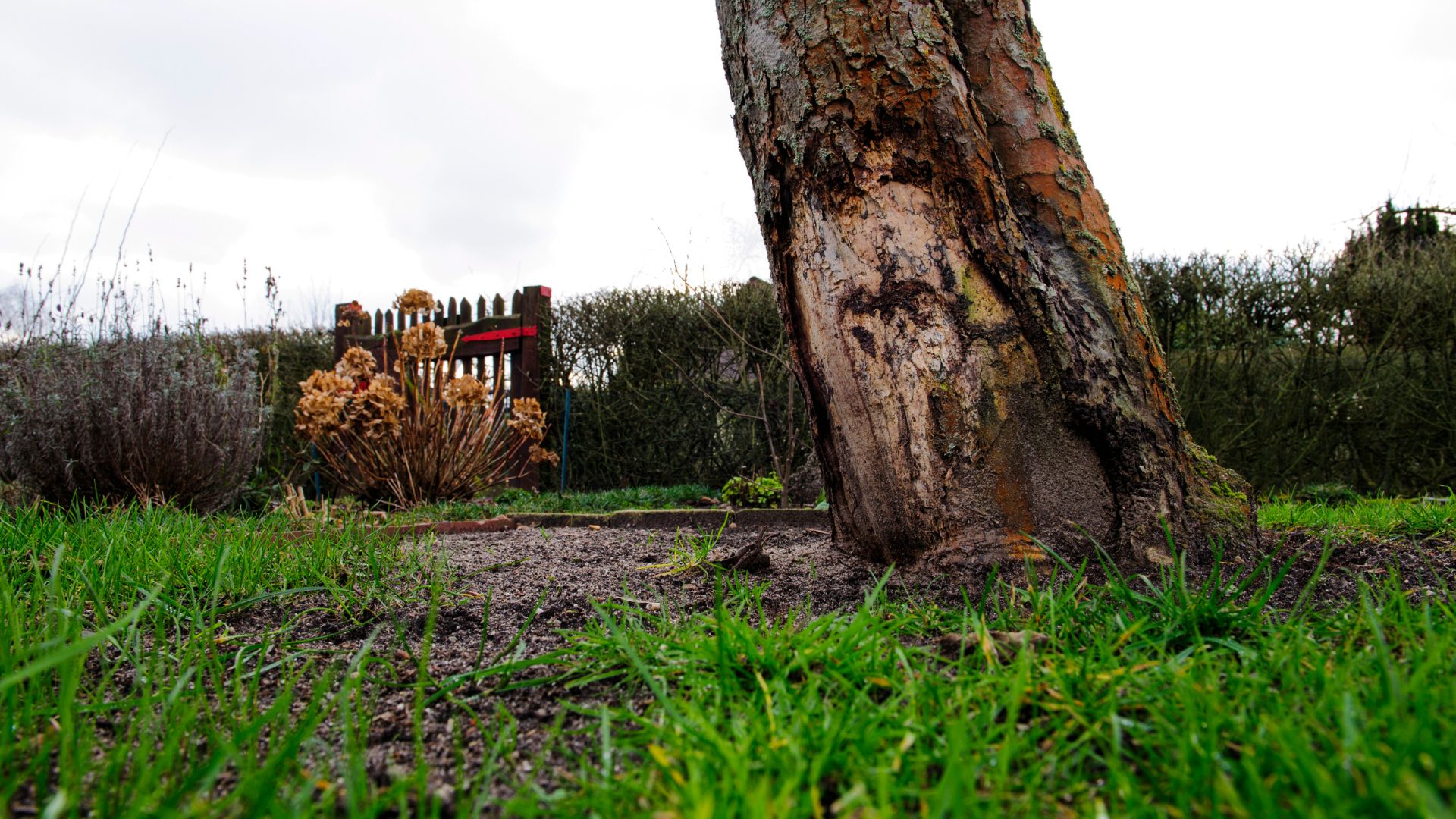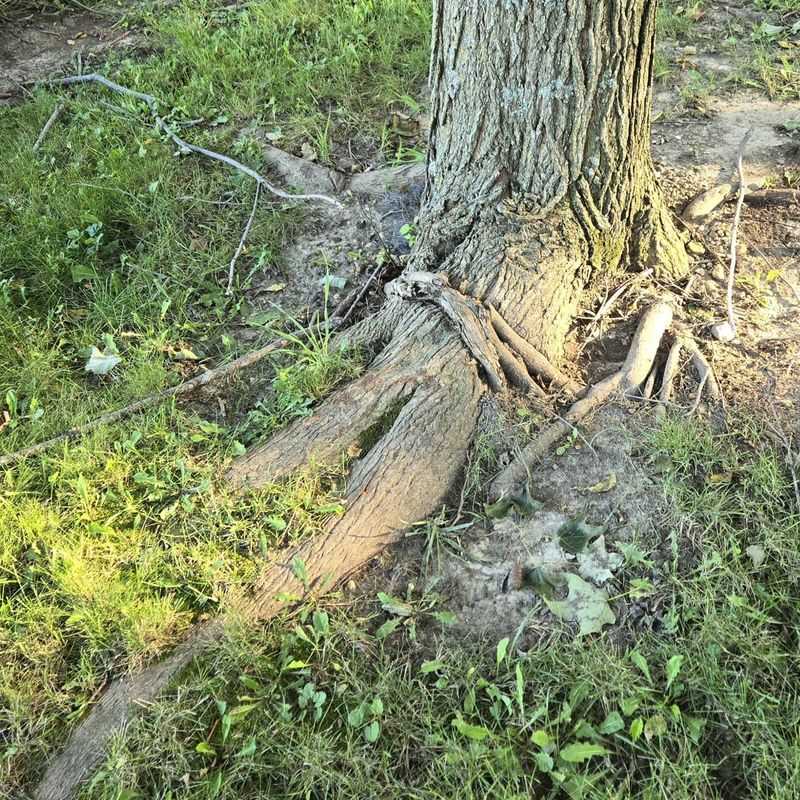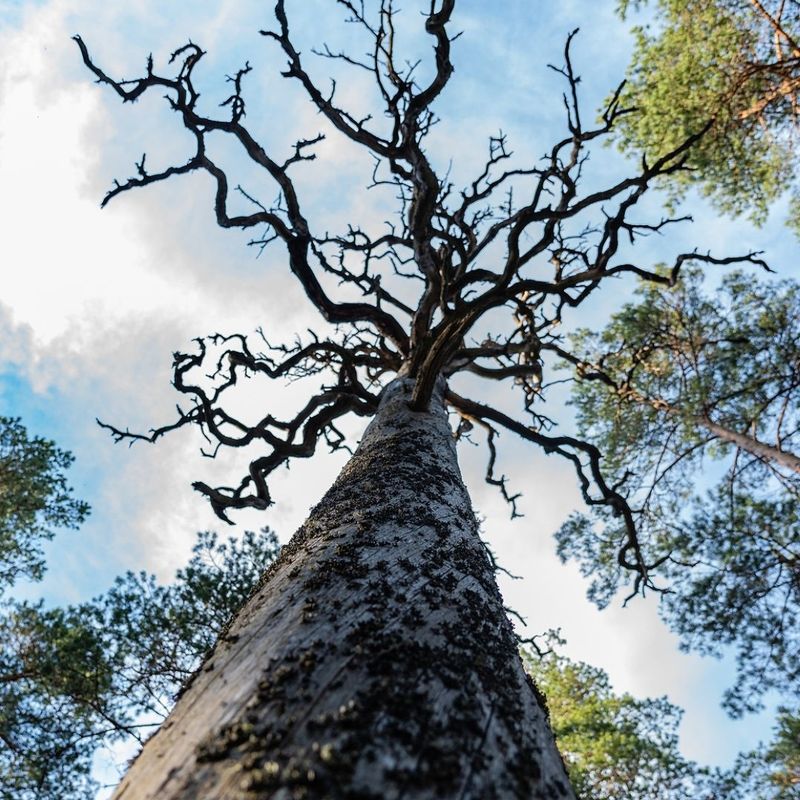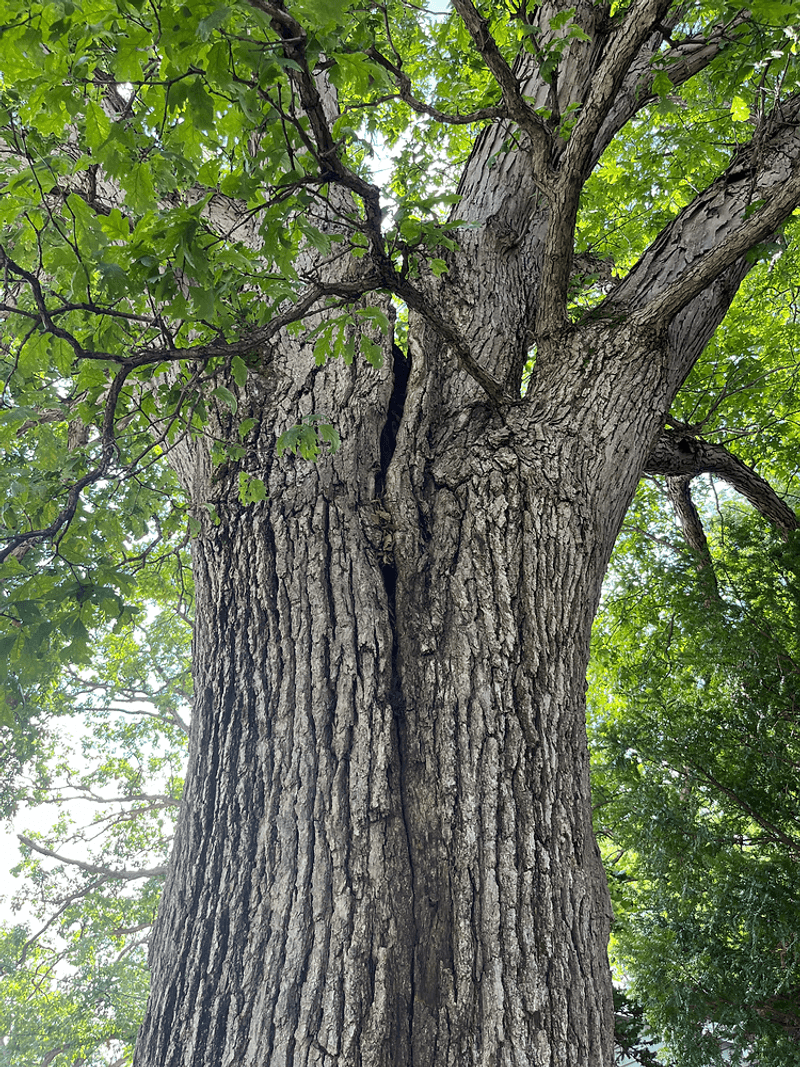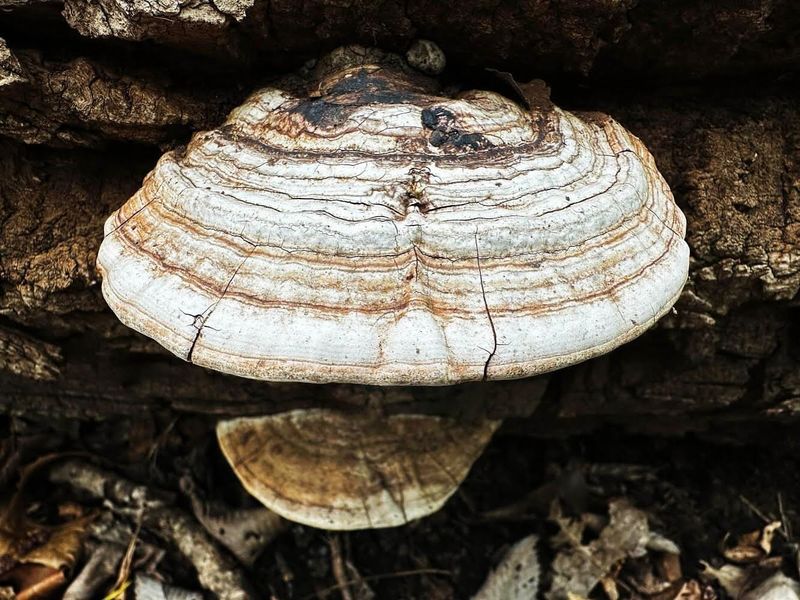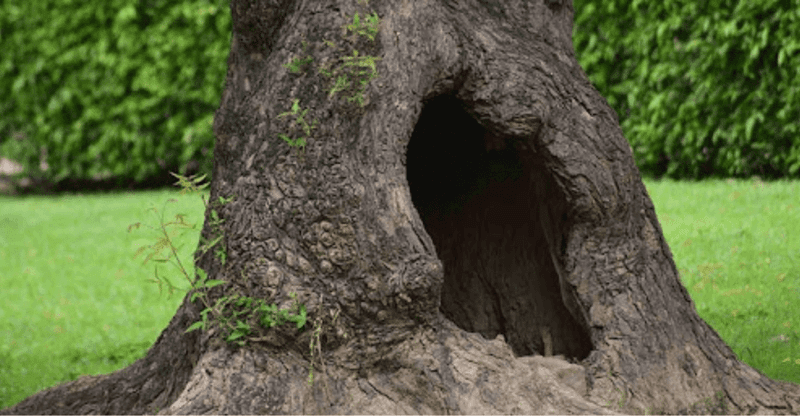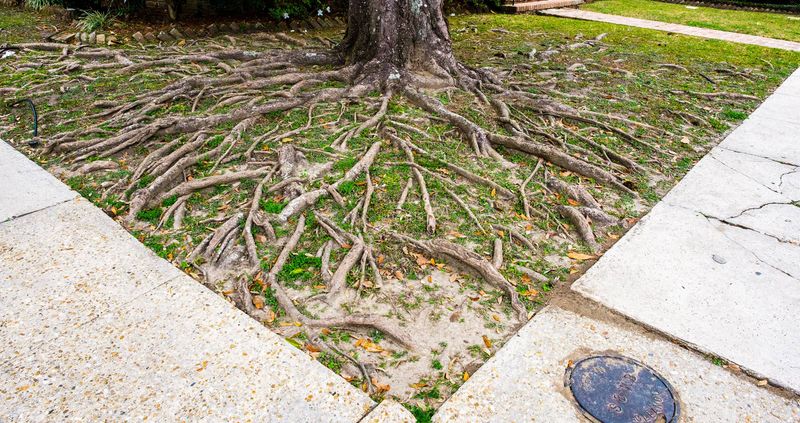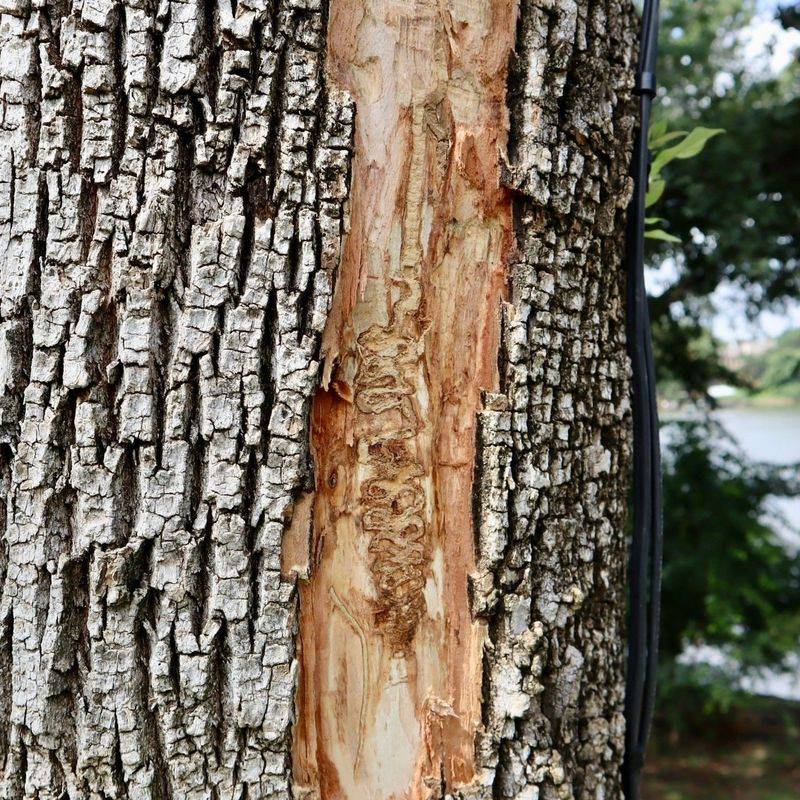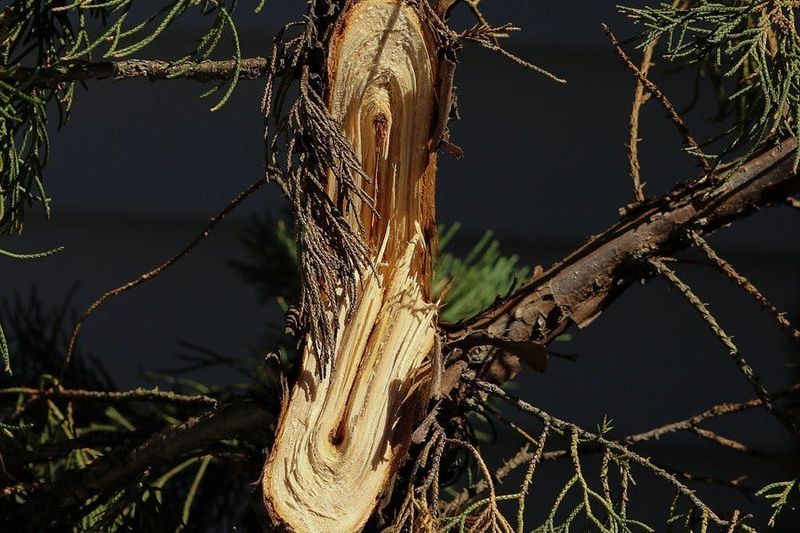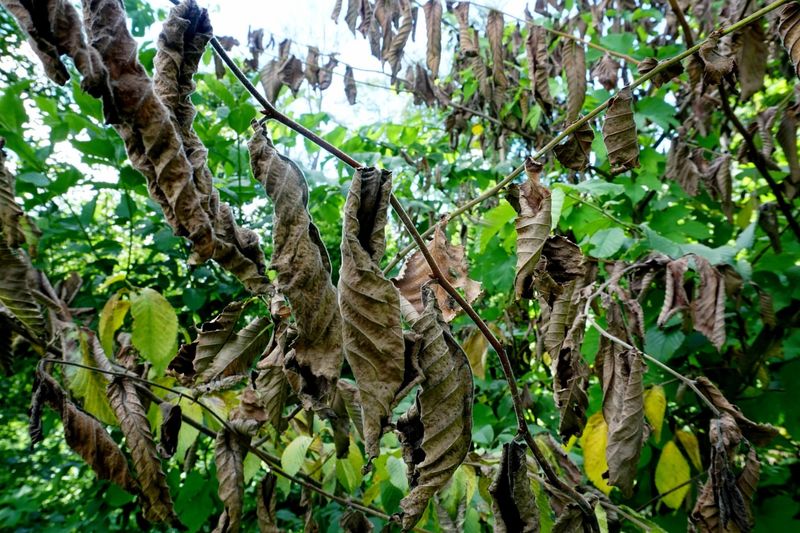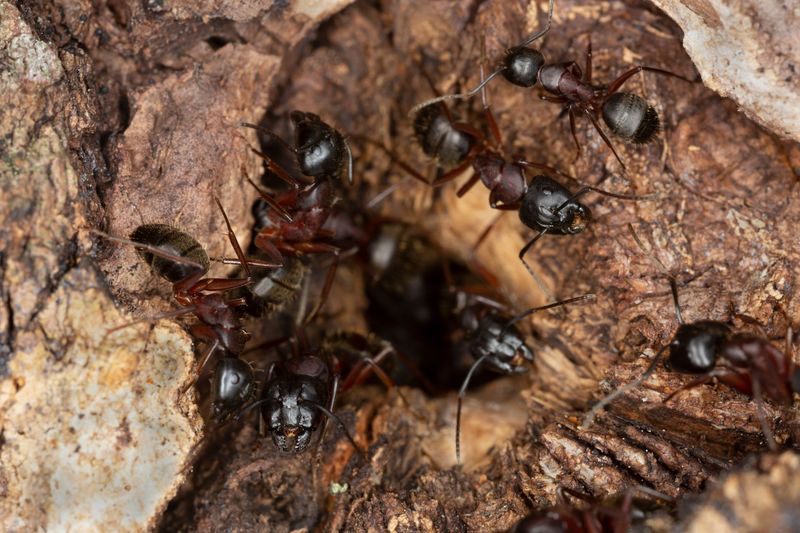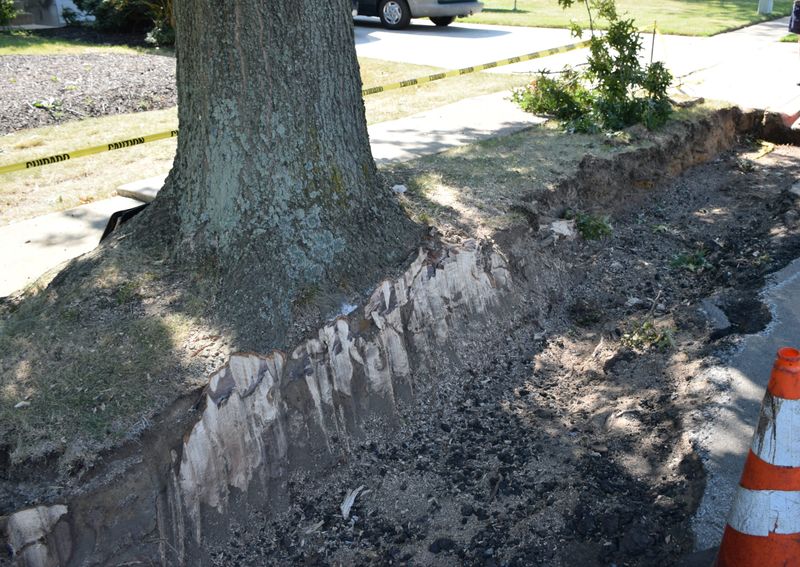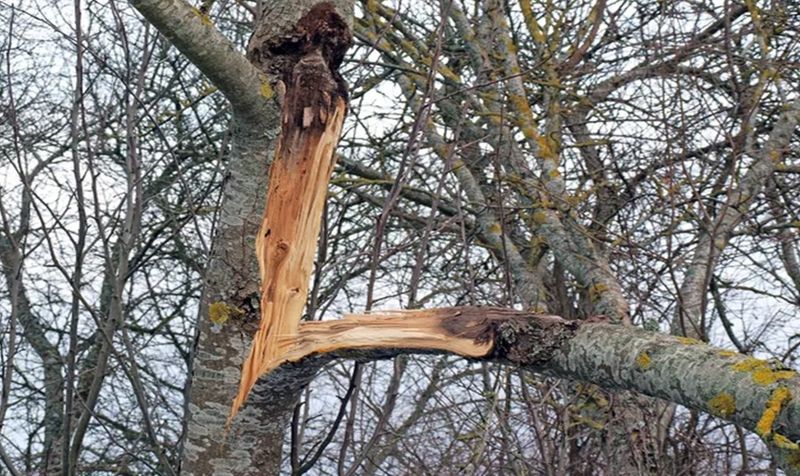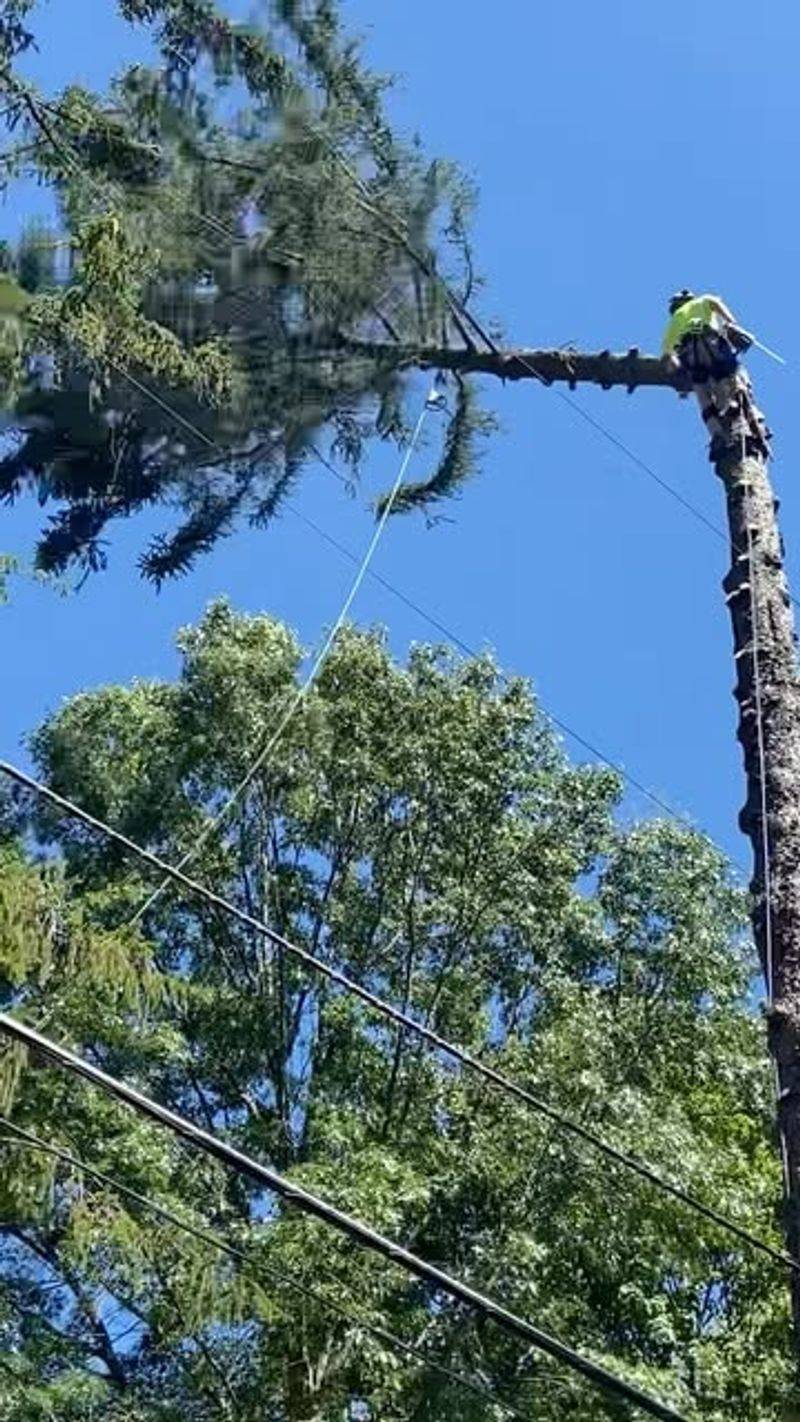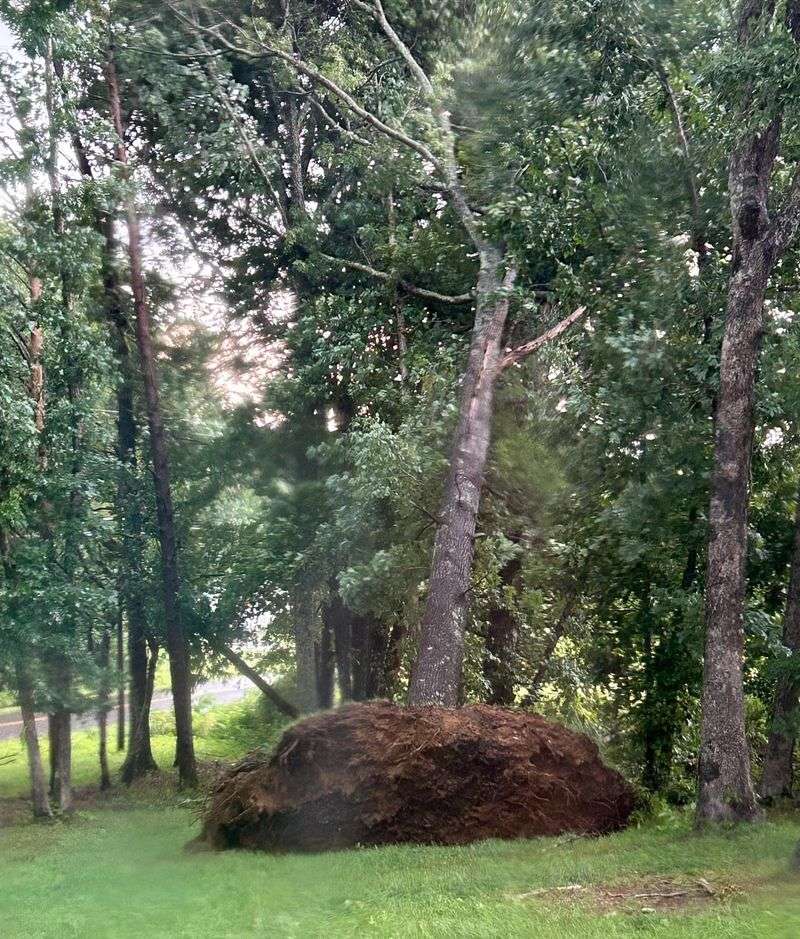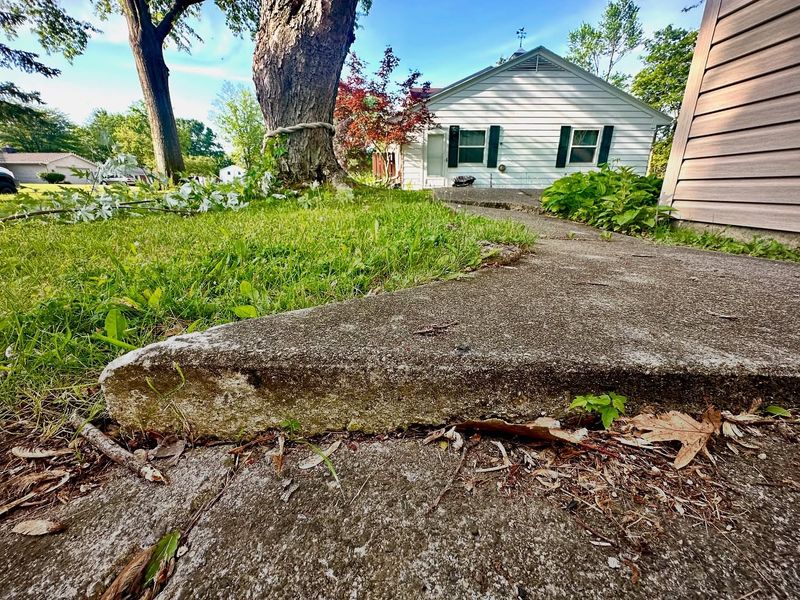Trees are a beautiful addition to any yard, adding shade, character, and even boosting property value. But when they’re damaged or diseased, they can quickly turn from asset to liability.
Catching problems early is key to staying safe. Splitting bark, dead limbs, or sudden leaning might seem minor at first—but they’re red flags. These signs can indicate internal rot, weak roots, or structural issues that could lead to falling branches or worse.
Whether it’s a towering oak or a slender pine, it’s worth getting a professional check if something seems off. A quick inspection today could prevent serious damage tomorrow—and give you peace of mind beneath those leafy canopies.
1. Leaning Trunk
A sudden lean in your tree’s trunk is never normal. Trees naturally grow with slight angles, but a new or worsening tilt signals root failure underneath the soil where you can’t see it.
I once ignored a leaning maple until a minor windstorm sent it crashing onto my neighbor’s fence. The repair cost me ten times what preventative removal would have.
Call an arborist immediately if your tree has shifted more than 15 degrees from vertical, especially after storms or ground disturbances.
2. Multiple Dead Branches
Dead branches scattered throughout a tree’s canopy point to serious internal problems. Unlike seasonal leaf drop, these branches remain bare while others flourish.
My father taught me to look up during walks after a friend was struck by a falling dead limb on a calm day. The branch had been dead for months, just waiting for the right moment to drop.
When more than 25% of branches show no signs of life, professional evaluation becomes urgent rather than optional.
3. Cracks In The Trunk
Deep vertical splits in a tree’s trunk compromise its structural integrity. These aren’t superficial marks but deep wounds that weaken the tree’s core support system.
Walking around my property after a heavy snowfall, I discovered a six-inch crack running up my oak tree. By spring, the crack had widened to almost an inch – a clear evacuation notice from Mother Nature.
Don’t delay calling experts when cracks exceed 3 inches deep or extend more than a quarter of the trunk’s circumference.
4. Mushrooms Growing At Base
Fungal growth around your tree’s base isn’t a charming garden feature – it’s a serious red flag. Mushrooms indicate decay happening inside where you can’t see it, essentially digesting your tree from within.
Last summer, a row of shelf mushrooms appeared around my neighbor’s pine. Three weeks later, the seemingly healthy tree collapsed during a mild rainstorm, narrowly missing their bedroom.
Any bracket fungi or mushrooms emerging from the trunk or root flare warrant immediate professional assessment.
5. Hollow Trunk
Tapping a tree trunk should produce a solid sound. A hollow drum-like echo means the tree has lost significant interior wood to decay, leaving just an outer shell of healthy tissue.
Many homeowners mistakenly believe trees can live indefinitely with hollows. In reality, once a trunk loses more than 30% of its interior mass, structural failure becomes increasingly likely.
Never attempt to examine large hollow sections yourself – the remaining shell could be dangerously thin and prone to sudden breakage.
6. Root Damage Or Exposure
Healthy trees need healthy roots, yet construction, soil compaction, or erosion can leave these vital anchors damaged or exposed. Roots shouldn’t be visible above ground except right at the trunk base.
After landscaping work near my birch trees, I noticed several thick roots had been severed. Within months, the trees began showing stress through early leaf drop and branch dieback.
Exposed roots more than 4 inches in diameter or covering more than 25% of the root system demand professional evaluation before the next storm hits.
7. Peeling Or Missing Bark
Bark serves as a tree’s protective skin, and large areas of missing or peeling bark expose the vulnerable tissues beneath. Unlike natural exfoliation in some species, irregular bark loss signals trouble.
The smooth patch on my backyard maple seemed minor until an arborist pointed out the discolored wood underneath – a sign of advancing fungal invasion that had already compromised 40% of the trunk.
When bark damage exceeds an area larger than your hand or encircles more than 25% of the trunk, professional help shouldn’t be delayed.
8. V-Shaped Branch Unions
Not all branch attachments are created equal. V-shaped connections where branches meet the trunk create weak points prone to splitting, especially during ice storms or high winds.
During a neighborhood walk after an ice storm, I counted seven split trees – all had tight V-crotches that had trapped water, froze, and expanded until the wood failed under the pressure.
Large branches with V-unions rather than stronger U-shaped connections need professional assessment, especially on trees near structures or play areas.
9. Sudden Leaf Loss
Leaves dropping out of season signals a tree in severe distress. While autumn leaf drop is normal, losing foliage during spring or summer indicates root problems, disease, or trunk damage.
My oak tree dropped half its leaves during a July heatwave last year. An arborist discovered girdling roots choking the trunk below soil level, slowly strangling the tree’s nutrient flow.
When more than 20% of leaves fall prematurely or turn brown while others remain green, schedule a professional inspection within days, not weeks.
10. Carpenter Ant Trails
Carpenter ants don’t cause tree decay, but they certainly exploit it. These large black or red ants build nests in wood that’s already softening from internal rot.
Following a line of ants up my maple revealed their nest entrance – a small hole leaking sawdust-like frass. The arborist later confirmed extensive hidden decay that had hollowed nearly 70% of the trunk’s interior.
Any established ant highways running up and down your tree warrant professional investigation, as they’re essentially advertising structural weakness to anyone paying attention.
11. Recent Ground Disturbance
Construction, trenching, or grade changes near trees cause invisible root damage that can destabilize even healthy-looking specimens. Tree roots typically extend 2-3 times the canopy width.
After installing a new water line just 10 feet from my seemingly unaffected oak, I noticed subtle leaning the following spring. The excavation had severed critical anchoring roots on one side.
Any construction within a distance equal to the tree’s height deserves professional risk assessment, especially for large trees that could cause catastrophic damage if they fall.
12. Splitting Or Cracking Sounds
Trees rarely fall without warning. Creaking, cracking, or popping sounds from a tree trunk or major limbs indicate wood fibers tearing under stress – an immediate danger sign.
During a mild windstorm, my neighbor’s pine emitted loud cracking noises that prompted his family to move their cars. Hours later, a 30-foot section split away, crushing their usual parking spot.
Never ignore unusual sounds from trees, especially during winds or after heavy snow loads. Evacuate the area and call an emergency arborist service without delay.
13. Power Line Contact
Trees touching power lines create immediate fire and electrocution hazards that demand professional intervention. Even branches several feet from lines can bridge the gap during winds or when weighed down by precipitation.
My cousin ignored the maple branches brushing against service lines to his house until a wet snow caused arcing that triggered a neighborhood power outage and nearly started a fire.
Never attempt to prune or remove branches near power lines yourself – this is exclusively utility company or certified line-clearance arborist territory.
14. Excessive Leaning After Storms
Trees that suddenly lean after storms have likely suffered root plate failure – a serious condition where the anchoring root system has broken free from the soil. This differs from trees that have grown at angles their entire lives.
The pine behind my garage tilted 10 degrees after heavy rains saturated the soil. Fresh soil cracks around the base confirmed the entire root ball was shifting – a ticking time bomb.
When soil appears heaved or cracked on the side opposite the lean, evacuation and emergency removal become necessary safety measures.
15. Cankers And Bleeding Sap
Cankers are dead sections of bark with distinct borders between healthy and diseased tissue. Often accompanied by oozing sap or resin, they indicate infection or injury that weakens structural integrity.
The amber streaks running down my pine’s trunk seemed minor until an arborist identified them as symptoms of pine wilt disease. Within months, the entire tree had died and needed emergency removal.
Large cankers covering more than 25% of the trunk circumference or multiple weeping areas require prompt professional evaluation before the weakened area fails.
16. Proximity To Structures
Even healthy trees become hazards when they’re too close to homes, garages, or play areas. As trees mature, their increasing size and weight multiply the potential damage should they fail.
The previous owners of my house planted a sweet gum sapling just 10 feet from the foundation. Twenty years later, its massive root system was cracking the basement wall while branches scraped against roof shingles during every breeze.
Large trees closer to structures than their potential fall height warrant regular professional risk assessment, especially species prone to weak wood or shallow roots.

